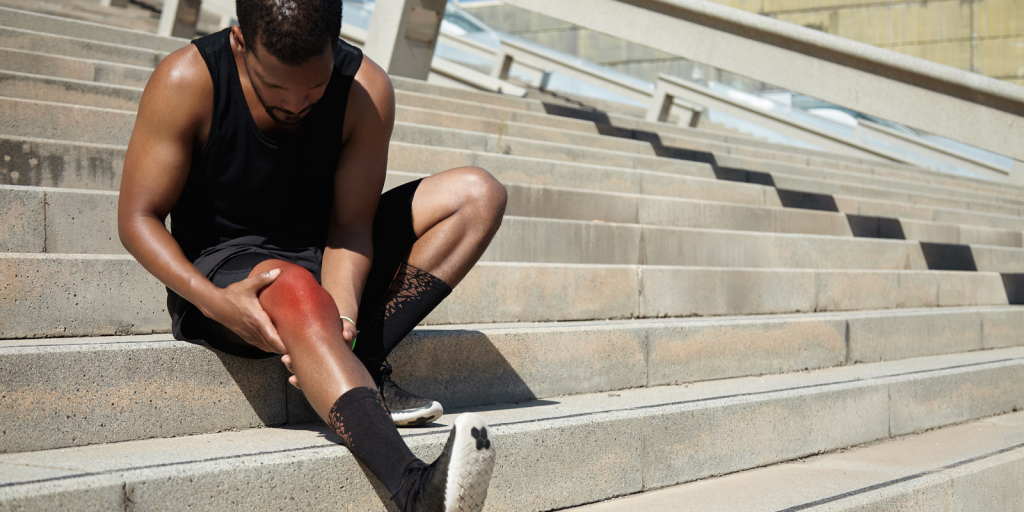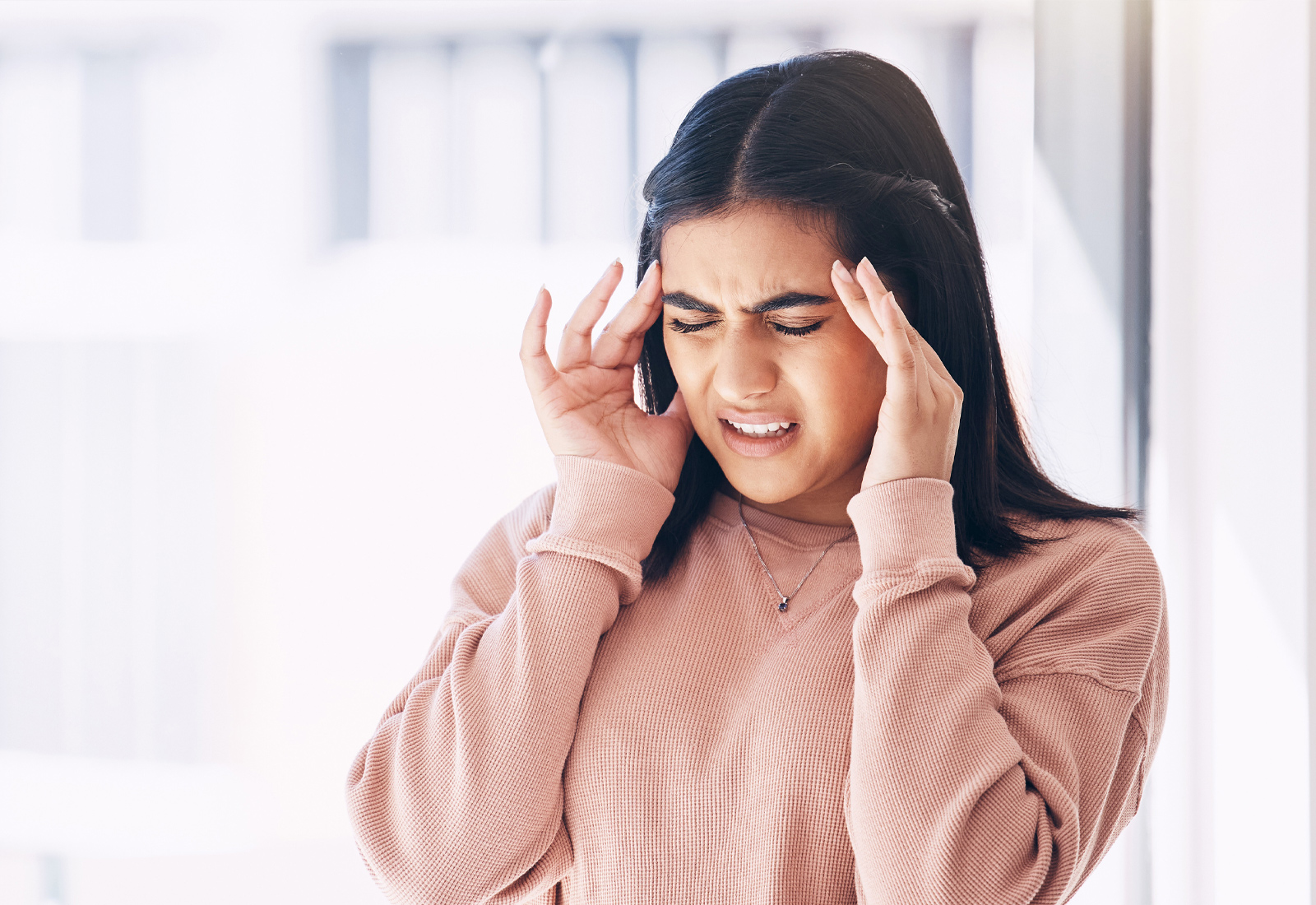Sports injuries happen when the body’s tissues are exposed to forces beyond their capacity to cope. This can result from a sudden traumatic event or a gradual accumulation of strain over time. Acute injuries, such as a muscle tear or ligament sprain, often occur during a specific movement or impact, while overuse injuries, including tendinopathies and stress reactions, build slowly through repetitive loading. Osteopaths recognise that both types share a common feature: the body’s structure and function have fallen out of balance.
During sport, every joint, muscle, and connective tissue must coordinate efficiently. When one part of the body becomes restricted or fatigued, another compensates, leading to altered movement patterns. For example, reduced ankle flexibility can increase strain on the knees and hips, while tight hip flexors can alter the alignment of the lumbar spine. Over time, these compensations create weak links that make tissues more vulnerable. At Sanderstead Osteopaths, our practitioners assess these relationships carefully, identifying not only the site of pain but also the biomechanical causes behind it.
Training habits often contribute to the onset of injury. Rapid increases in mileage, intensity, or frequency place extra stress on tissues that have not yet adapted. Inadequate recovery, poor nutrition, or dehydration can further compromise resilience. Footwear and surface choice also matter; hard or uneven ground increases impact loading through the joints. By exploring each of these elements during assessment, osteopaths can distinguish between mechanical overload and other factors such as joint instability or poor motor control.
When tissues are injured, the body responds with inflammation to begin the healing process. This brings essential cells and nutrients to the area but also causes swelling, warmth, and pain. If inflammation is excessive or unresolved, it can limit range of motion and slow recovery. Osteopathic treatment helps regulate this process by promoting healthy circulation, supporting drainage, and restoring joint and soft tissue mobility. Gentle manual therapy encourages natural healing without aggravating sensitive structures.
Even after the initial pain settles, unresolved stiffness or weakness can persist, leading to recurrent issues. Osteopaths help restore coordination across the entire body, ensuring that one area is not overloaded while another remains underused. This holistic perspective is what distinguishes osteopathy in the management of sports injuries. By understanding the cause and restoring functional balance, treatment not only aids recovery but also helps prevent future setbacks.
At Sanderstead Osteopaths, we see many active individuals from Croydon, Purley, Coulsdon, and nearby areas who have sustained both sudden and gradual sports injuries. Through tailored osteopathic care, our team supports each patient in regaining strength, mobility, and confidence to return to their chosen activity safely.
Sports injuries affect a wide range of tissues, each responding differently to strain or trauma. Muscles are particularly prone to overstretching and tearing when their fibres contract forcefully without adequate preparation or flexibility. Common examples include hamstring, quadriceps, and calf strains. Ligaments, which stabilise joints, can become overstretched or torn during sudden changes of direction, leading to sprains in the ankle, knee, or wrist. Tendons, the fibrous cords that attach muscle to bone, may develop irritation or degeneration from repetitive overload, resulting in conditions such as Achilles or patellar tendinopathy.
Joints themselves can become restricted or inflamed following impact or repetitive compression. Runners often experience knee and hip discomfort from mechanical imbalance, while overhead athletes may develop shoulder impingement or rotator cuff irritation. In contact sports, spinal and rib injuries are also common, where rotational or compressive forces exceed the tissues’ tolerance. At Sanderstead Osteopaths, our osteopaths are trained to differentiate between these presentations through detailed case history, palpation, and movement testing. This enables accurate diagnosis and a treatment plan that supports healing at the right pace.
Many sports injuries involve more than one tissue type. For example, a sprained ankle may include ligament strain, muscle spasm, and compensatory tightness further up the leg. Addressing only the local area rarely leads to full recovery. Osteopathic care looks at how these structures work together within the kinetic chain, considering balance, coordination, and load transfer throughout the body. By restoring normal joint mechanics and soft tissue tone, osteopathy promotes more efficient healing and helps reduce the risk of recurrence.
When an injury occurs, the body begins a structured healing process that unfolds in three overlapping phases: inflammation, repair, and remodelling. During the inflammatory stage, blood flow to the area increases, bringing immune cells that clear damaged tissue and initiate repair. Swelling and warmth are normal at this point but can limit movement and contribute to pain. Gentle osteopathic techniques help manage this by encouraging circulation and lymphatic drainage, supporting natural resolution without suppressing the beneficial aspects of inflammation.
The repair phase follows as the body begins to produce new collagen and tissue to replace what was damaged. This new material is initially weak and disorganised, requiring gradual, controlled loading to align the fibres properly. Osteopaths guide this process with specific movement advice and manual therapy that maintains mobility while protecting the healing structures. By ensuring surrounding joints and muscles function correctly, osteopathy prevents secondary stiffness that could otherwise slow recovery.
Finally, the remodelling phase strengthens the new tissue and restores normal function. This stage can take several weeks or even months, depending on the severity of the injury and the demands of the sport. Regular osteopathic input during this time helps maintain balanced movement and prevents compensation patterns from developing elsewhere in the body. Our osteopaths often integrate tailored home exercises and gradual return-to-sport planning to ensure that recovery is complete, not merely symptom-free.
For many patients in Purley, Kenley, and Selsdon, understanding this natural healing sequence provides reassurance that recovery is achievable with patience and appropriate support. Osteopathic treatment works in harmony with the body’s own repair mechanisms, promoting long-term resilience rather than quick, temporary relief.









